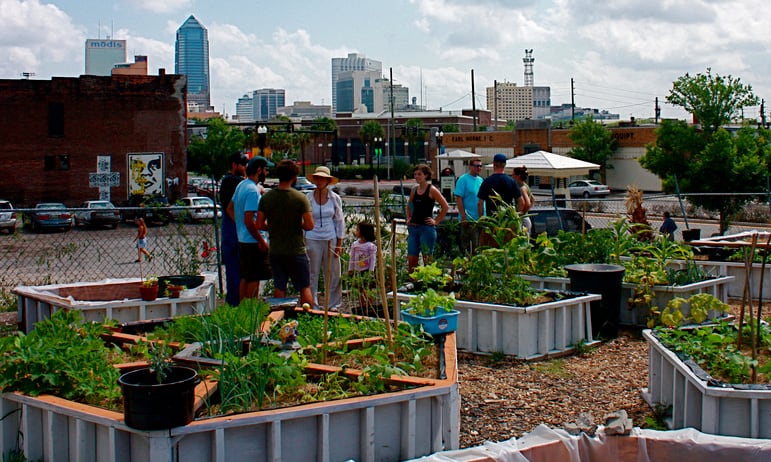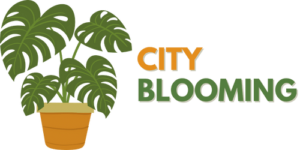The Greatest Guide To City Blooming
The Greatest Guide To City Blooming
Blog Article
The Greatest Guide To City Blooming
Table of ContentsAbout City BloomingCity Blooming Things To Know Before You Get ThisWhat Does City Blooming Mean?The Greatest Guide To City BloomingSome Known Questions About City Blooming.
Interested in expanding food to buy in the City of Chicago? Thinking of beginning an area garden? Modifications to the Chicago Zoning Ordinance enable farming uses like community yards and urban farms in many components of the city. Below is a checklist of often asked questions regarding the regulations and guidelines that growers need to take into consideration when preparing an urban farming project.
The zoning amendment does not change any type of other codes handling composting, building licenses, buying or leasing City possessed home, business licenses or environmental contamination. There are existing codes that control these issues and they continue to be in full result and may apply to your project. Neighborhood yards are commonly owned or handled by public entities, public companies or community-based organizations and preserved by volunteers.
Urban farms grow food that is planned to be sold, either on a not-for-profit or for-profit basis. Due to their business objective, urban ranches need a service permit.
The Best Strategy To Use For City Blooming
The quantity of compost material can not go beyond 25 cubic lawns at any kind of provided time according to the requirements in 7-28-715 of the City's Municipal Code. Due to the fact that the dirt at the majority of brand-new garden sites needs changing, garden compost, soil, timber chips, or other products can be acquired to build or enhance the expanding space.

If a building permit is required then the hoophouse will be taken into consideration an accessory building. You can learn even more concerning the building permit demands by getting in touch with the Division of Buildings. The 25,000-square-foot dimension restriction is planned to prevent a solitary community garden from controling a provided block or diminishing the block's existing household or business character.
The restriction does not put on gardens found in Public Open Room (POS) districts. Can there be even more than one area garden that is 25,000 square feet on a solitary block? Yes. The size restriction relates to individual gardens, not to specific blocks. No. Fence is not required, nonetheless, gardens that have huge vehicle parking locations might be called for to install secure fencing or various other landscaping features.
How City Blooming can Save You Time, Stress, and Money.
B1 & B2 districts need that all business usage activities be conducted inside your home. Is secure fencing needed for urban farms? Fences may be needed, along with landscaping and testing, for specific auto parking areas and exterior work or storage space areas depending on location and the specific activity taking area.
Yes. Urban farms require building licenses and zoning authorizations prior to building. Various other kinds of city evaluation may be required depending upon details frameworks, tasks, dimension, landscaping, licensing, public heath and stormwater monitoring concerns. Most of these demands are determined in the project design or allowing procedure, nevertheless, the applicant might be liable to separately recognize particular licenses or permits that may be called for.
The Division of Organization Affairs and Customer Defense can help establish the particular kind of business license that's needed. Off road vehicle parking is needed for most business tasks in Chicago. The called for number of car park spaces is based on the number of staff members working on site and not the square video footage of the expanding room.
Unknown Facts About City Blooming

Yes. A metropolitan ranch can market garden compost product created on site, however, the procedure must conform with the policies in 7-28-715 of the Chicago Municipal Code. Yes. Aquaponic systems are permitted inside on urban farms in numerous zoning districts. A zoning testimonial and structure license is required in order to install frameworks or systems and a business license is called for as defined over.
Up to five hives or nests of honey bees may be maintained as an accessory usage. Nonetheless, beekeepers need to sign up with the Illinois Department of Agriculture. To learn more concerning the suggested zoning change you may get in touch with the Division of Housing and Economic Development, Bureau of Preparation and Zoning at 312.744.8563.
Farming in cities and city locations A city ranch in Chicago. Urban agriculture refers to numerous methods of cultivating. https://ameblo.jp/cityblooming/entry-12857756993.html, handling, and distributing food in metropolitan areas. The term likewise applies to the area activities of animal husbandry, aquaculture, beekeeping, and horticulture in a metropolitan context. Urban agriculture is distinguished from peri-urban agriculture, which takes place in rural areas at the edge of suburban areas.
All About City Blooming
It can entail a motion of natural cultivators, "foodies" and you could try these out "locavores", who look for to develop social networks based on a common principles of nature and community holism. These networks can develop by way of formal institutional support, coming to be incorporated into regional town as a "transition community" motion for lasting metropolitan advancement.
In either situation, the more direct accessibility to fresh veggie, fruit, and meat items that might be understood through city agriculture can enhance food protection and food safety while reducing food miles, leading to lower greenhouse gas emissions, thereby adding to climate adjustment reduction. Several of the very first evidence of urban agriculture comes from Mesopotamia.
Report this page